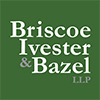 Construction of Residential Housing “Can’t Be Fast Enough” For San Francisco
Construction of Residential Housing “Can’t Be Fast Enough” For San Francisco
If San Francisco’s mayor has his way, the city is about to enter a major residential construction boom. According to Mayor Ed Lee, the city is suffering from a housing shortage that has led to pent-up demand and price escalation. To combat that shortage, the mayor recently set a goal of 30,000 new or rehabilitated homes by 2020 — an ambitious target, considering that the city’s chief economist says that only 100,000 new units have been built in San Francisco since the 1920s. The residential construction and rehabilitation process, in the mayor’s words, “can’t be fast enough.”
City officials have indicated that over the past ten years, the city’s population has grown by 75,000 while the city has added only 17,000 new units of housing. Combined with a strong job market, the housing shortage has resulted in skyrocketing rents. San Francisco rents are the highest in the nation, according to the U.S. Census Bureau, and the median single family home price recently passed $1 million.
How does the city intend to meet its 2020 goal? It already has nearly eleven thousand residential units now under construction and more than another ten thousand in the permitting pipeline. To speed up existing projects and add to them, the mayor has committed to implementing the recent (and speedy) recommendations of a special housing task force created in December of last year. The task force’s recommendations include short-term administrative changes to accelerate approval of new housing permits and encourage private construction, as well as medium and long term proposals that would require legislative action.
Short-term recommendations include priority processing for projects involving affordable housing, policies to encourage maximum density use, simultaneous review of permit applications by various city departments, and hiring of new staff to review housing permits. Some of these recommendations are already being put into action. For example, the Planning Department recently announced that it is using a fee surplus to hire eleven new staff members to help whittle down a permitting backlog. Not every recommendation, however, makes things easier for developers generally. The city is preparing a process to add a layer of Planning Commission discretionary review for any project involving loss of housing.
Longer-term suggestions from the task force include Planning Code amendments to facilitate construction of accessory dwelling units, building code amendments to relax “high rise” regulations, and streamlined historic resource review under CEQA. The mayor’s office will also continue to support major redevelopment projects at Hunters Point and on Treasure Island, which could add a combined 6,300 units by 2020.
There are, however, countervailing forces to the city’s goal of speeding housing construction. Proposition B on the upcoming June 3, 2014, ballot would add a voter approval requirement to any waterfront construction above certain height thresholds. A court challenge recently failed to keep the proposition off the June ballot, and if related past ballot measures are predictive, the proposition has a strong chance of passing.
If San Francisco succeeds in addressing its housing shortage, other cities may follow with similar reforms of their own.
William Most
Briscoe Ivester & Bazel LLP
155 Sansome Street, 7th Floor
San Francisco, CA 94104
Telephone: (415) 402-2700
Fax: (415) 398-5630